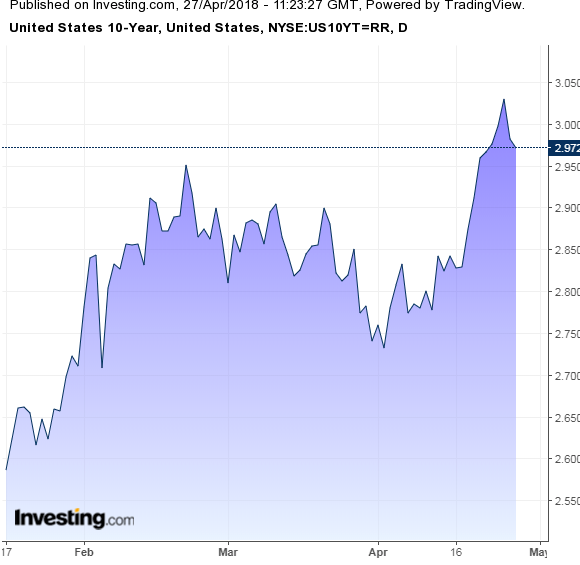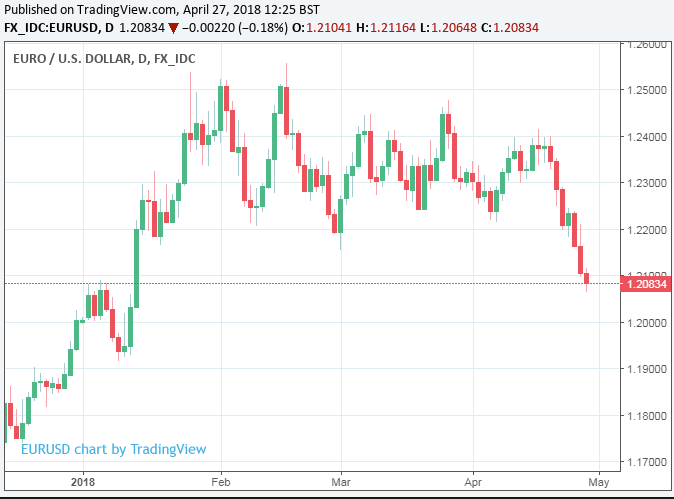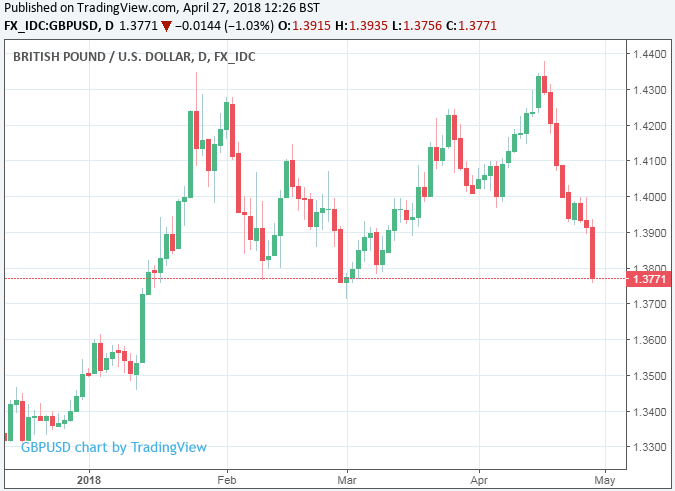US Dollar Advances against G10 Rivals after Economy Grows Faster than Expected in First-quarter
- Written by: James Skinner
-
-US GDP slows to 2.3%% in first-quarter, but beats expectations.
-Weakness result of "seasonality" and does not deter the Dollar.
-US Dollar remains on front foot as 10 year yield hugs 3% threshold.

© Adobe Stock
The US Dollar remained on the front foot into the final session of the week, rising against almost all of its developed world rivals, as traders responded to elevated American bond yields and a better than expected set of first-quarter GDP figures.
US GDP rose by 2.3% during the three months to the end of March, down from the 2.9% growth seen in the final quarter of 2017 but comfortably ahead of the consensus for a much lower reading of just 2%.
The slower pace of growth was attributed by the Bureau of Economic Analysis to a reduced pace of consumer spending as well as lower exports, residential investment and government spending.
"US GDP was a tad firmer than expected to start the year, but with that gap largely driven by inventory building, there will be no rush to rewrite the outlook for the year as a whole," says Avery Shenfeld, chief economist at CIBC Capital Markets. "The two surprises were that net trade was a small plus for growth, and inventories added a full 0.4% to the growth rate."
Separately, the employment cost index rose by 0.7% during the recent quarter, which is above the 0.6% expected by markets, while the core personal consumption expenditures price index rose at an annual pace of 2.5% for the first time since the final quarter of 2016.
"Overall, slightly bearish for Treasuries due to the overshoot to headline expectations in both reports," Shenfeld adds.
Traders have maintained a steady bid for the greenback ever since American 10 year bond yields took their first run at the 3% handle at the beginning of the week. US yields have since broken above the 3% threshold and, at the time of writing, are sitting just a fraction beneath it.
This has proven a powerful stimulant for the Dollar and will continue to do so if CIBC's Shenfeld is right and the US bond market sells off this afternoon, which would push yields higher still.

Above: 10 Year US Government Bond Yield.
The US Dollar index was quoted 0.38% higher at 91.92 a short time after the release and and the 10 year US Treasury yield was down 0.55% at 2.97%.

Above: Euro-to-Dollar rate shown at daily intervals.
The Euro-to-Dollar rate was down 0.28% at 1.2073 while the Pound-to-Dollar rate was down 1.18% at 1.3750 due to a mixture of Dollar strength and Sterling weakness.

Above: Pound-to-Dollar rate shown at daily intervals.
US Dollar and bond market price action has been driven both by concerns over rising Treasury issuance, which is connected to President Donald Trump's budget-busting tax reforms, and fears that rising oil prices and a robust economic performance will soon push inflation higher across the pond.
This means markets are increasingly contemplating an even higher level of interest rates in the US and the GDP figure Friday looks set to ensure this trend endures for a while yet.
In addition, Federal Reserve rate setters have set the bar for a capitulation rather high since their April meeting, when it was noted in the minutes that "many" FOMC members were growing more confident in US inflation prospects and increasingly coming around to the view that a faster pace of interest rate rises may be necessary this year and next.
"The minutes of the March FOMC meeting show that officials were growing more concerned about an overheating economy, particularly in light of the bigger-than-expected fiscal stimulus," writes Michael Pearce, an economist at Capital Economics, in a note at the time. "Several participants thought the federal funds rate would eventually need to be raised above its longer-run normal value for a time."
A “number” of participants in the meeting also thought that a “slightly steeper” path would be necessary for the federal funds rate over the next few years at that meeting, given expectations that President Trump's fiscal stimulus would boost growth and inflation during the years ahead.
At present, markets are pricing just two more rate hikes from the Federal Reserve this year, which would take the total to three when the April move is included, but a number of economists including those at Capital Economics are forecasting four rate rises.
Advertisement
Get up to 5% more foreign exchange by using a specialist provider to get closer to the real market rate and avoid the gaping spreads charged by your bank when providing currency. Learn more here.




